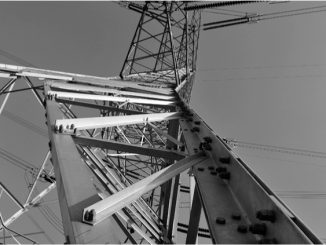
Having reached a situation where the demand–supply gap has narrowed, the focus now is on reliable and quality power supply. A crucial element of a modernised grid, this is increasingly becoming a key area of attention.
Power reliability is affected by several factors, including change in the magnitude and shape of voltage and current, harmonic distortions and frequency excursions. These issues create an unstable network, also limiting the adoption of clean and renewable energy.
An analysis of power quality (PQ) data by the Ministry of Power shows that, for the month of April 2017, the average duration of power cuts stood at 6.38 hours and the average number of power cuts in the month stood at nine times at the all-India level.
Such PQ disturbances have a deleterious impact on industrial operations. Direct costs of PQ disturbances include damage to the equipment, loss of production, loss of raw material, salary costs during non-productive periods and restart costs. PQ issues also lead to blocked capacity and/or increased capital investment, premature failure of equipment due to electrical and thermal stresses, unplanned outages, poor power factor and over-current surges.
PQ improvement technology solutions
Power quality issues are present in any power system in varying quantum. However, the most important ones that require immediate attention are reactive power and harmonic distortion. Harmonic currents create increased heating in electrical cables, leading to premature ageing and overstressing of the electrical insulation. Meanwhile, though reactive power is essential for the functioning of any AC power system, it needs to be managed in order to reduce demand, improve voltage stability margins and reduce transmission and distribution network losses.
Use of technology solutions to tackle the issue of power quality is quite popular. A look at some of the solutions that are being deployed for improving the quality of power supply…
Static VAR compensator
A static VAR compensator (SVC) is a parallel combination of a controlled reactor and a fixed shunt capacitor. An SVC is capable of step-less adjustment of reactive power over an unlimited range without any time delay. It improves the system stability and system power factor. In addition, SVCs help stabilise the voltage at the receiving end of distribution lines, which helps increase the utilised voltage capacity. SVCs also help dampen harmonic distortions, resulting in improved power supply. The most commonly used SVC schemes include the thyristor-controlled reactor, the thyristor-switched capacitor, self reactor, the thyristor-controlled reactor–fixed capacitor, and the thyristor-switched capacitor–thyristor controlled reactor.
Static synchronous compensator
Intermittent sources of energy such as wind and solar can impact the quality and reliability of the electrical network. The static synchronous compensator (STATCOM) is a flexible AC transmission system device that uses power electronics to control power flow and improve transient stability in power grids. A STATCOM functioning at the point of interconnection not only secures the electrical grid, but also enables the continued adoption and use of renewables. It reacts according to the voltage source converter principles and unique pulse width modulation, and has the ability to switch within milliseconds. STATCOM has a unique feature that it is not affected by the voltage magnitude, even if system voltage drops significantly.
Harmonic filter
Harmonics present in the system can be mitigated by harmonic filters, which are of three varieties: passive, active and hybrid. Passive harmonic filters require constant loading conditions and their performance depends on the source of impedance, which is hard to determine and varies with system changes. They are, however, able to improve the power factor and reduce high frequency harmonics of large size. Passive filters must be used in conjunction with tuning reactors to prevent instability due to parallel resonance with source inductance. Active harmonic filters are able to provide harmonic mitigation under any load condition. These filters also allow the control of output current and provide stable operations against AC source impedance variations. Active filters can respond quickly, irrespective of the order and magnitude of the harmonics. However, compared to passive filters, active filters tend to be more expensive as their initial and running costs are usually higher. Hybrid filters use the properties of both active and passive filters to mitigate harmonic distortions in the system.
Besides filters, there are some other harmonic mitigation techniques for low-order and uncharacteristic harmonics. Phase multiplication, for example, is effective in reducing low-order harmonics as long as there is a balanced load. Harmonic injections can remedy uncharacteristic harmonics, but because system impedance is not a part of the design criteria, these may give rise to low-order harmonics. Harmonic mitigation techniques with pulse width modification are capable of obtaining harmonic reductions in very minor frequency deviations. These can also be programmed to eliminate specific harmonics.
Constant voltage transformer
Constant voltage transformers (CVTs) provide a barrier to the spikes and electrical noise disturbances, while also working in reverse mode to prevent any such elements from disturbing the main load at the grid. They are capable of correcting main voltage sags and surges by keeping the iron core of the transformer’s secondary section saturated, thereby generating a constant voltage output. These transformers have a unique capability to store energy for about half of the cycle due to their specific design, which when combined with an inverter and a static transfer switch can provide uninterrupted power transfer to an alternative source. In case of a fault or overload, this feature of a CVT enables it to maintain power supply to the grid, thus preventing a total loss. CVTs are able to drown any considerable input voltage variations and provide nominal output voltage regulation. CVTs ensure that any voltage sag is rectified immediately, though they are not effective during instantaneous voltage interruptions or extremely deep voltage sags.
Energy storage systems
Energy storage is likely to emerge as one of the most crucial components of the country’s energy infrastructure strategy, given the government’s target to have 160 GW of wind and solar photovoltaic (PV) capacity by 2022. Due to the increasing renewable energy integration, the variable load has risen, leading to greater unpredictability in grid operations. This influx of variable power has caused an imbalance in the production and consumption of power in the system as well. Energy storage systems allow the grid to draw power from the storage system in case of high demand and store power during low-demand periods, thus bridging the gap by providing power as per the load requirement. These solutions enable quick response to the varying grid requirements, thus maintaining grid stability and high quality power supply. One of the key hurdles in the large-scale adoption of energy storage technologies has been the high cost associated with it. However, given the current deployment levels and industry research and development efforts under way globally, most experts estimate that energy storage costs will reduce at a faster pace than expected.
Distributed generation unit
Distributed generation (DG), also known as on-site generation, refers to the use of small-scale power generation technologies located close to the load being served. DG systems lead to improved power reliability, particularly in areas that suffer from frequent outages. The use of DG technologies can help reduce the load on the grid system, thus improving the quality of power for customers. Diesel generators, gas turbines, solar PV systems, fuel cells and wind turbines are some types of DG technologies. Although DG systems have a number of benefits to offer, they can use harmonics in the system.
Conclusion
Going forward, the growing proliferation of sensitive electronic devices and sophisticated automation equipment poses a threat to quality power supply. Increased use of control electrical equipment such as adjustable speed AC and DC drives and uninterrupted power supply devices as well as energy efficient lighting causes huge changes in electric loads. LED lights without proper inbuilt filters cause harmonic pollution and also operate at a low power factor. Besides this, the increase in the influx of variable power into the grid by renewable sources of energy has led to greater unpredictability in grid operations, resulting in an imbalance in the production and consumption of power in the system.
That said, measures such as reactive power compensation and harmonics filtering need serious attention. Assessing cost dynamics while adopting technology solutions is essential to ensure quality power supply in a cost efficient manner.



